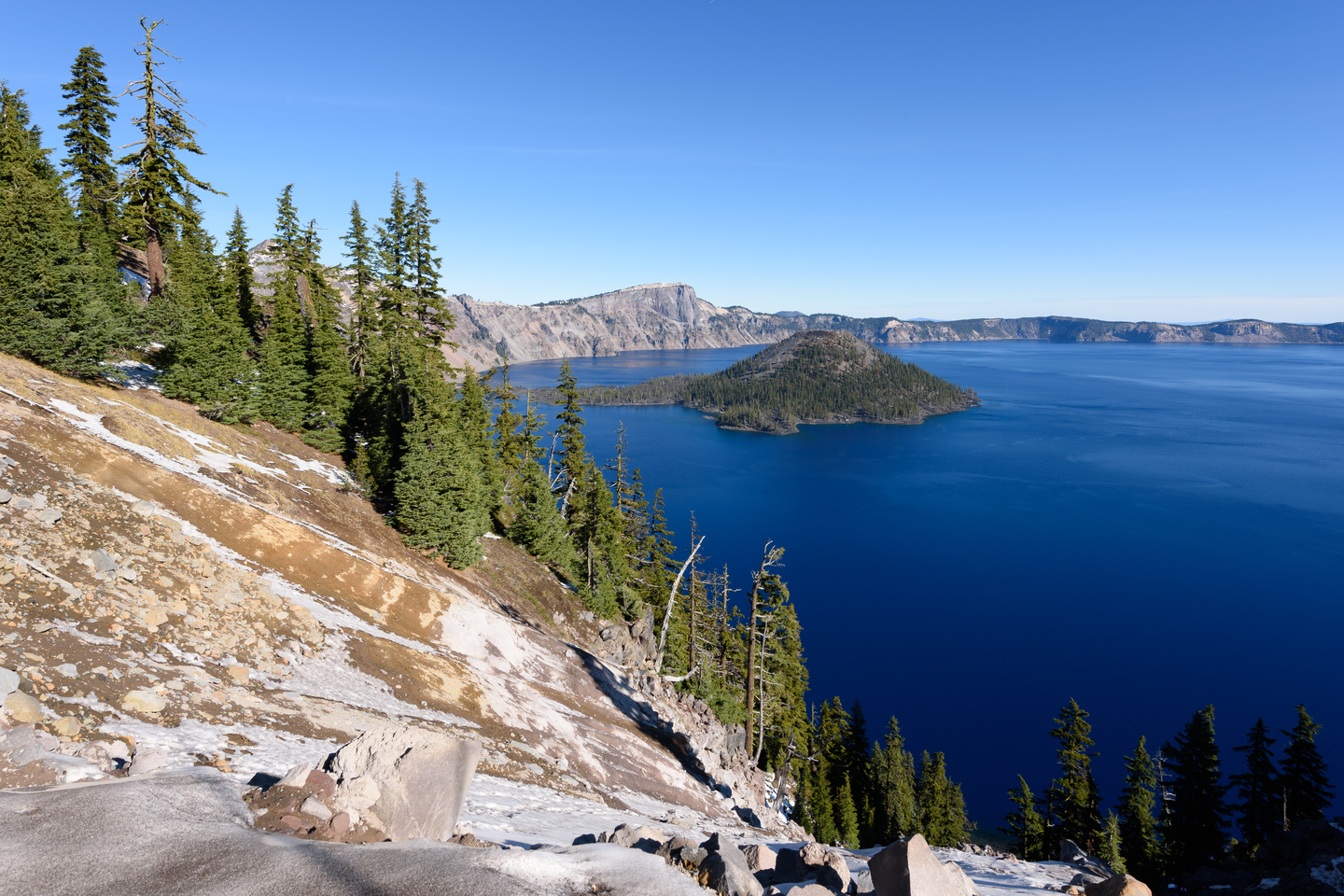Crater Lake and Mount St. Helens are two iconic volcanic landmarks in the Pacific Northwest, each with its own unique history and breathtaking beauty. Crater Lake, formed by the collapse of Mount Mazama, is the deepest lake in the United States, known for its pristine blue waters. Mount St. Helens, famous for its 1980 eruption, offers a stark landscape of recovery and renewal. Both sites provide visitors with unparalleled opportunities for hiking, photography, and geological exploration.
What is the Geological History of Crater Lake and Mount St. Helens?

Crater Lake Formation
Crater Lake’s formation is a testament to the power of volcanic activity:
- Formed approximately 7,700 years ago
- Result of Mount Mazama’s catastrophic collapse
- Ejected about 50 cubic kilometers of magma
- Created a deep caldera filled with rainwater and snowmelt
Mount St. Helens Eruption
Mount St. Helens’ recent history is marked by its dramatic 1980 eruption:
- Date: May 18, 1980
- Triggered by a 5.1 magnitude earthquake
- Caused the largest landslide in recorded history
- Devastated 230 square miles of forest
- Created a 2,084-foot deep crater
How Deep is Crater Lake Compared to Other Lakes?

Crater Lake’s depth is truly remarkable:
| Rank | Lake | Depth (feet) | Depth (meters) |
|---|---|---|---|
| 1 | Crater Lake | 1,943 | 592 |
| 2 | Lake Tahoe | 1,645 | 501 |
| 3 | Lake Chelan | 1,486 | 453 |
As the deepest lake in the United States and the seventh deepest in the world, Crater Lake’s crystal-clear waters offer a unique ecosystem and stunning visual experience.
What Are the Best Hiking Trails at Crater Lake and Mount St. Helens?
Crater Lake Trails
- Cleetwood Cove Trail: The only trail leading to the lake’s shore
- Garfield Peak Trail: 3.5-mile round trip with panoramic views
- Watchman Peak Trail: 1.6-mile round trip offering stunning vistas
Mount St. Helens Trails
- Monitor Ridge Trail: Challenging 10-mile round trip to the crater rim
- Harmony Trail: Easy 2.4-mile round trip with views of Spirit Lake
- Hummocks Trail: Moderate 2.3-mile loop through recovering landscape
How Has the Landscape Changed Since the Mount St. Helens Eruption?
The 1980 eruption of Mount St. Helens dramatically altered the surrounding landscape:
- Reduced the mountain’s elevation by 1,314 feet
- Created a horseshoe-shaped crater
- Formed new lakes, including Spirit Lake
- Initiated a remarkable process of ecological recovery
Visitors today can witness the ongoing transformation of the area, with new plant and animal life reclaiming the once-barren landscape.
What Are the Unique Features of Crater Lake’s Water?
Crater Lake’s water is renowned for its purity and color:
- Deep blue hue due to its depth and clarity
- No rivers flowing in or out, maintaining water quality
- Rain and snowmelt are the only sources of water
- Clarity allows visibility up to 100 feet deep
The lake’s unique ecosystem supports several endemic species, including the Mazama newt.
When is the Best Time to Visit Crater Lake and Mount St. Helens?
Crater Lake
- Summer (July-September): Ideal for hiking and boat tours
- Winter (December-March): Snowshoeing and cross-country skiing opportunities
- Spring and Fall: Less crowded, but some facilities may be closed
Mount St. Helens
- Summer (June-August): Best for hiking and clear views
- Fall (September-October): Beautiful foliage and fewer crowds
- Winter (December-February): Snowshoeing and winter sports
What Photography Tips Can Enhance Your Visit to These Volcanic Sites?
- Capture Crater Lake’s blue waters during early morning or late afternoon
- Use polarizing filters to reduce glare on the lake’s surface
- At Mount St. Helens, photograph the recovering landscape in changing light
- Include foreground elements like wildflowers or volcanic rocks for scale
- Experiment with long exposures for dramatic cloud movements
How Do the Visitor Facilities Compare Between Crater Lake and Mount St. Helens?
Crater Lake National Park
- Crater Lake Lodge: Historic accommodation with lake views
- Mazama Village: Campground and basic amenities
- Rim Village: Visitor center, gift shop, and dining options
Mount St. Helens National Volcanic Monument
- Johnston Ridge Observatory: Main visitor center with exhibits
- Science and Learning Center at Coldwater: Educational programs
- Several campgrounds in surrounding Gifford Pinchot National Forest
Both sites offer ranger-led programs, interpretive trails, and scenic drives.
What Are the Conservation Efforts at Crater Lake and Mount St. Helens?
Crater Lake
- Water quality monitoring to maintain the lake’s pristine condition
- Invasive species prevention programs
- Restoration of native plant communities
Mount St. Helens
- Long-term ecological research on post-eruption recovery
- Managed forest regeneration projects
- Protection of unique habitats for species like the western toad
These efforts ensure the preservation of these unique volcanic landscapes for future generations.
How Can Visitors Contribute to the Preservation of These Natural Wonders?
- Stay on designated trails to prevent erosion
- Practice Leave No Trace principles
- Participate in volunteer programs offered by the parks
- Support local conservation organizations
- Educate others about the importance of these volcanic ecosystems
By following these guidelines, visitors can help protect Crater Lake and Mount St. Helens for years to come.
References:
1. Crater Lake – Global Volcanism Program – Smithsonian Institution
2. Formation of Crater Lake – Oregon Explorer
3. Crater Lake – National Park Service
4. Mount St. Helens – USGS
